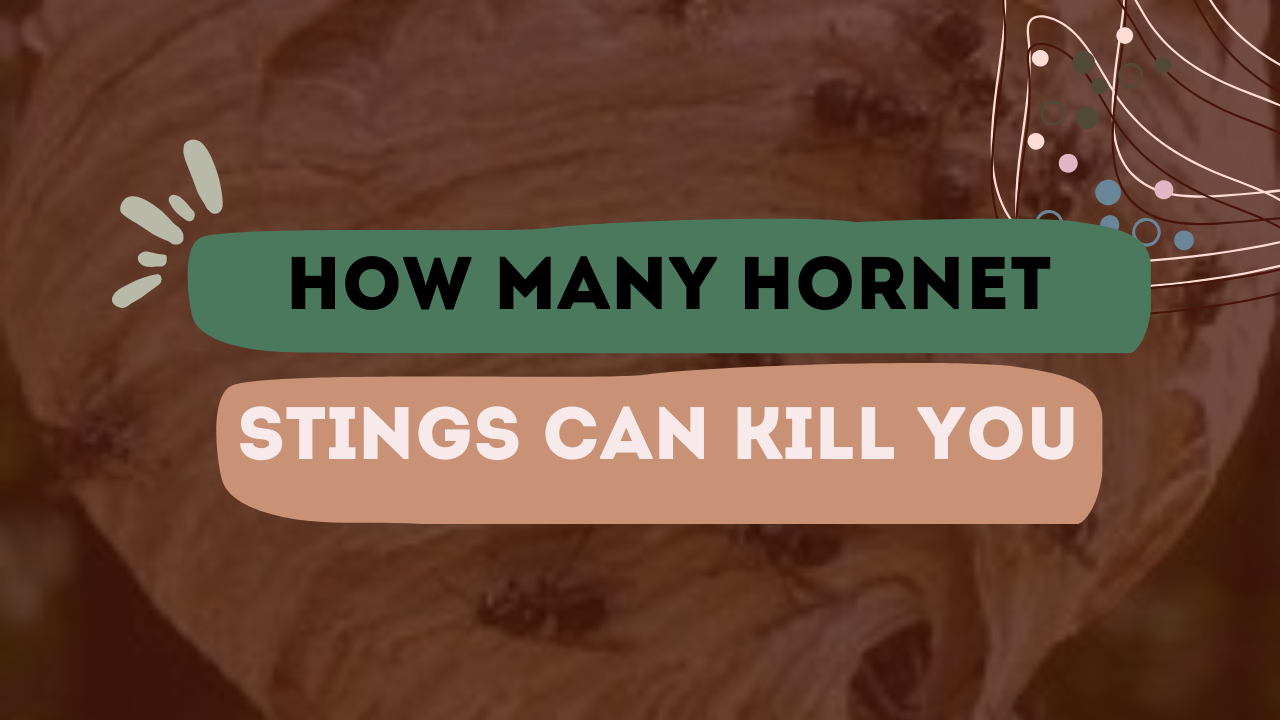So you’re chilling outside, maybe having a picnic or mowing the lawn, and then you hear it — that angry little buzz that instantly ruins your whole vibe. Yep. A hornet.
But here’s the question we’ve all lowkey wondered: how many hornet stings does it actually take to kill someone? Like, are you doomed if a bunch of them go full attack mode? Or are you just in for a bad day?
Let’s break it down.
Table of Contents
What Even Is a Hornet?
Hornets are basically the more aggressive, jacked-up cousins of wasps. They’re bigger, louder, and way more likely to attack if they feel threatened. The most common in the U.S. is the European hornet, but there are also Asian giant hornets (aka “murder hornets” — terrifying name, right?).
Unlike bees, hornets can sting you more than once. Their stingers don’t fall off, so they’re like little flying warriors with unlimited ammo. Fun.
How Dangerous Are Hornet Stings?
For most people, a hornet sting is just painful and annoying — red, swollen, maybe a little itchy. But the danger level jumps way up if:
- You get stung a ton of times
- You’re allergic to hornet venom
- You get stung in a sensitive area (like your face or neck)
Hornet venom can mess with your nerves, destroy cells, and even trigger anaphylactic shock in allergic people.
How Many Stings Can Actually Kill You?
Okay, here’s the real deal. Science says it takes around 10 stings per pound of body weight to be deadly if you’re not allergic. That means:
- If you weigh 150 pounds, it could take about 1,500 stings
- If you weigh 100 pounds, it’s around 1,000 stings
But that’s worst-case scenario, like a full-blown hornet swarm. Most people never experience that. Still, even 30–50 stings can make you seriously sick, especially if you don’t get help fast.
What If You’re Allergic?
If you’ve got a sting allergy (which a lot of people do and don’t even know it), just one sting could be super dangerous.
Signs of an allergic reaction (aka anaphylaxis) include:
- Swollen lips, tongue, or throat
- Trouble breathing
- Dizziness or fainting
- Fast heart rate
- Vomiting or hives
If any of that happens after a sting, it’s not the time to “wait and see.” Call 911 immediately. Use an EpiPen if you have one.
Are Murder Hornets Actually a Threat?
Remember when everyone freaked out over “murder hornets”? That was mostly about Asian giant hornets, which have stronger venom and a huge stinger. These things have actually caused deaths in parts of Asia when people got attacked by swarms.
One sting from a murder hornet won’t usually kill you — but 50+ stings? That’s a medical emergency. Thankfully, they’re rare and not something most people in the U.S. or Europe will ever run into.
What to Do If You Get Stung
If it’s just one sting and you’re not allergic, here’s the chill plan:
- Wash the area with soap and water
- Ice it to reduce swelling
- Take antihistamines if it’s itchy
- Watch for reactions (just in case)
If you get stung multiple times — like 10 or more — or feel weird afterward, go see a doctor immediately.
How to Avoid Getting Stung in the First Place
Prevention = less pain. Here’s how to stay safe:
- Don’t mess with nests, even if you think you’re faster than them (spoiler: you’re not)
- Stay chill when a hornet flies near you — swatting at them just makes them mad
- Wear shoes outside, especially in grassy areas
- Cover sugary drinks (hornets love soda)
- Use insect repellent if you’re going camping or hiking
Also, don’t try to squish one unless you want its friends to show up for revenge.
Final Thoughts
So how many hornet stings can kill you? If you’re not allergic, it takes a lot — like hundreds. But if you are allergic, even one sting could be life-threatening.
Most of the time, you’ll be fine after a sting. But always take it seriously if you feel weird afterward or get stung by more than a few.
Moral of the story? Respect the hornet. Don’t poke the nest. And maybe skip that lawn mowing if you hear buzzing near the bushes.

